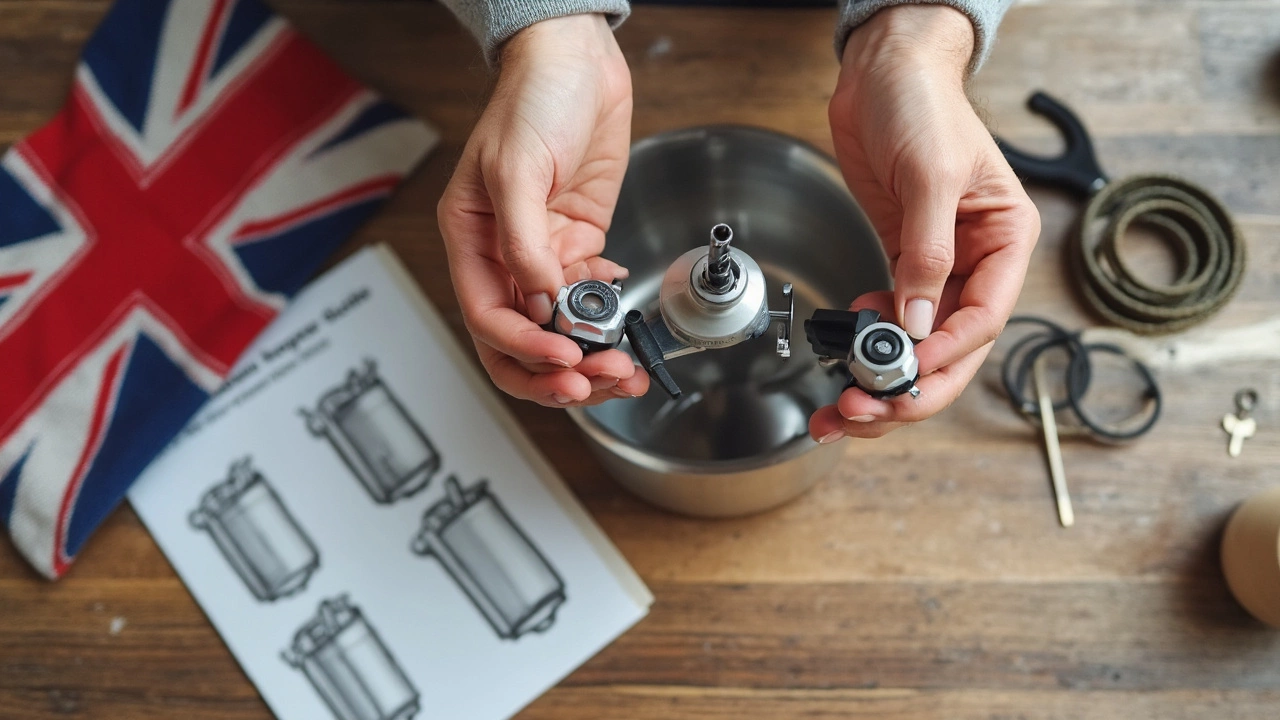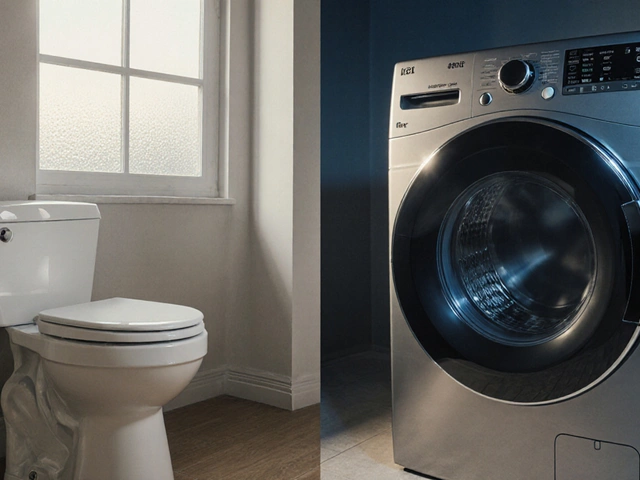Most people toss a pressure cooker the moment it stops working right. But honestly, a lot of the common problems don’t mean it’s dead yet—most pressure cookers are built to last and can be repaired with a bit of know-how and maybe a few cheap parts.
Gaskets that don’t seal, lids that won’t close, or steam that leaks everywhere—these are the pressure cooker equivalent of a flat tire. Usually, you don’t need to replace the whole unit. Picking up a replacement gasket or buying a new valve can get things up and running fast. Some fixes take less effort than figuring out why your coffee machine refuses to work half the time.
- Know the Pressure Cooker Parts That Commonly Fail
- Diagnosing the Most Frequent Issues
- DIY Repair: What You Can Fix Yourself
- When It’s Time to Call a Professional
- Keeping Your Pressure Cooker Running Longer
Know the Pressure Cooker Parts That Commonly Fail
Pressure cookers are workhorses, but they have a few parts that break down more often than others. If you know what to look out for, you’ll save some cash by swapping out small pieces instead of buying a whole new cooker. Here’s what usually goes first:
- Gasket (Sealing Ring): This rubber or silicone ring helps the lid seal tight. When it wears out or gets damaged, your cooker won’t reach pressure. Most folks need to replace the gasket every 12-18 months, especially if they use their cooker a lot.
- Pressure Valve: This is the safety piece that lets steam out once the pressure gets high enough. If it gets clogged, bent, or stuck, your cooker becomes unsafe fast.
- Lid Lock/Sealing Mechanisms: If these parts are worn or broken, the pot won’t lock or seal, and you’ll hear more hissing than actual cooking. Some models use a simple metal pin, others use more complex locks, but either way, wear and tear can mess them up.
- Handles and Screws: These get loose or even crack over time, especially if you’re like my kid Callista who likes to drag things by the handles.
- Base Pot and Inner Surfaces: This isn’t as common, but heavy-duty use and harsh cleaners sometimes make the inner pot pit or warp. That can mess with how heat spreads and pressure builds.
Here’s a simple table showing which parts fail most often and how hard they are to replace:
| Part | Typical Failure | DIY Replace? | Average Replacement Cost (USD) |
|---|---|---|---|
| Gasket | Cracks, hardening, loss of stretch | Yes | $10-20 |
| Pressure Valve | Clogs, warping, damage | Usually | $7-15 |
| Lid Lock/Sealing Mechanism | Sticking, breaking | Depends on model | $5-25 |
| Handles/Screws | Loose, cracked | Yes | $2-10 |
| Base Pot | Pitting, warping | Not usually | $30-60 |
If your cooker is electric, add power cords, heating elements, and control panels to that list—these break less often but cost more if they do. So before you write off your old pressure cooker, check these basic parts. Many replacements are just a quick online order away, and you’ll be back in action without even missing taco night.
Diagnosing the Most Frequent Issues
Before you grab your screwdriver or rush to replace your cooker, you need to figure out what’s actually wrong. Skipping this step wastes money and can create more trouble. Most fixes for a broken pressure cooker repair come down to a handful of well-known problems.
- Leaky steam: Steam escaping from where the lid meets the pot usually means the gasket (that rubber ring) is worn, broken, or just not seated right. A quick inspection can confirm if the gasket is dry, cracked, or missing.
- Pressure not building: If it’s taking forever to build pressure or not reaching pressure at all, double-check that the lid is locked. Also, check the pressure valve for clogs—tiny food particles often sneak in there and block things up.
- Stuck lid: It’s freaky, but this is almost always due to pressure that hasn’t fully dropped. Make sure all pressure is released (fully) before trying to open. If it’s electric, check the float valve.
- Unusual smells or burning: If it smells burnt, check the bottom for stuck food or a warped pot. Residue can stop your cooker from sealing, and in some cases, it can trigger safety features that prevent pressurization.
- Error codes (digital models): Most modern electric cookers throw codes for things like overheating, lid not secured, or low liquid. The manual decodes these, but commonly, it’s low water or something blocking the vent.
If you’re still not sure what’s wrong, a simple chart can help you match the problem to likely causes:
| Problem | Likely Cause | Quick Fix |
|---|---|---|
| Steam leaks from lid | Worn gasket, misaligned lid | Replace gasket, reseat lid |
| Not building pressure | Blocked valve, low liquid | Clean valve, add liquid |
| Lid won’t open | Pressure not released | Release pressure, cool down |
| Burning smell | Residue, not enough liquid | Clean pot, check ingredients |
| Error code | Sensors, lid, water | Check manual for code meaning |
Always unplug or turn off the cooker before poking around. Even manual pressure cookers can give you a steam burn if you’re not careful. Diagnosing a pressure cooker isn’t rocket science—you just need to know what to look for and how to stay safe while checking it out.

DIY Repair: What You Can Fix Yourself
If your pressure cooker isn’t working right, don’t panic. There’s a good chance you can handle the repair yourself without a fancy toolkit. Seriously, most of these fixes are pretty easy, and you’ll be surprised how often it comes down to something simple.
The pressure cooker repair job most people face is swapping out the gasket or sealing ring. If you notice steam escaping from the edges, it’s usually because the gasket is worn out, stiff, or cracked. All you have to do is:
- Remove the old gasket from the lid. Give it a look—if it’s brittle, sticky, or stretched out, that’s your problem right there.
- Clean the lid groove using a damp cloth. Food gunk gets trapped and messes with the seal.
- Pop the new gasket in—make sure it sits evenly in the groove, or you’ll just end up with the same leaky mess.
The next most common issue is a clogged or faulty pressure valve. Pressure cookers won't build pressure if the valve’s blocked by dried-up food or residue. Here’s what to do:
- Remove the valve (most unscrew or just pop out).
- Flush it with warm water. Grab a toothpick or a small brush to clear anything stuck in there.
- If it’s still not working, replacements cost a few bucks online.
Sometimes the problem is with the handles or the locking mechanism. Cracked or loose handles aren’t just annoying, they’re unsafe. Most handles are fixed with a screwdriver and a replacement part from the manufacturer or even a universal fit from Amazon.
Don’t forget about the rubber safety plug. If it’s missing, swollen, or rock hard, swap it for a fresh one. It’s a cheap part and keeps your pot from turning into a kitchen bomb.
Feel like none of this applies? Give your pressure cooker a solid clean, especially in crevices and around the lid. About half the time, weird sealing or pressure problems are just the result of old food crud getting in the way.
If you’ve tried all that and the cooker still doesn’t work, it might be something deeper. But for most everyday issues, these quick repairs will get you back to stewing and braising in no time.
When It’s Time to Call a Professional
Sometimes fixing a pressure cooker isn’t just about swapping a gasket or cleaning a valve. There are certain repairs you shouldn’t try on your own—unless you want to end up with an even bigger problem, or worse, a safety hazard in your kitchen.
If you notice the lid mechanism is damaged or just won’t lock tight even after changing the gasket, it’s time to get expert help. Same goes for electrical issues in electric models. If your electric pressure cooker won’t turn on, has tripped the circuit breaker, or you see flickering lights, don’t start poking around the wiring. Pressure cookers pack a punch with their internal pressure, so any damage to sensors, heating elements, or wiring should be left alone until a pro can check it. Water getting into the electrical compartment is also a big red flag.
Visible cracks or dents in the main metal pot can’t be fixed with a little DIY magic. In fact, using a cooker with a cracked body is a real risk—the pressure could cause it to burst. Also, if you smell burning plastic or see scorch marks anywhere, stop using the cooker right away.
- Internal electrical faults (dead control panel, broken sensor, tripped fuses)
- Stuck or malfunctioning lid hardware that won’t respond to normal cleaning or simple part swaps
- Leaks from locations other than the rubber gasket or vent valve
- Cracked or warped pressure cooker bodies
The bottom line: If it’s just a worn part you can find and swap (like a gasket or a valve), go for it. But if it’s a structural or electrical problem, or if the cooker still acts up after you’ve covered the obvious fixes, toss the screwdriver and call a pressure cooker repair pro. Most appliance repair shops can take a look—some even specialize in pressure cookers, which is a lifesaver if you use it all the time like we do in my house. Better safe than sorry, especially when there’s steam involved.

Keeping Your Pressure Cooker Running Longer
Pressure cookers are not really disposable gadgets. With a few good habits, you can stretch their life for years—sometimes even decades. Regular maintenance is way better than waiting for something to break.
The biggest headache for most folks? The gasket. This rubber ring is the part that keeps steam from escaping, but it’s also the part that wears out first. If you use your cooker a lot, replace the gasket every 12-18 months. Even if you don’t use it often, time alone can make the gasket hard or cracked.
Here are a few tips that really work if you want your pressure cooker to last:
- Clean every part that touches food, every time. Steam valves, safety plugs, and the lid need more than just a rinse.
- Never use metal tools around the sealing edges—scratches there can kill the seal.
- Check the pressure release valve for blockages before each use. Even a bit of stuck food can cause problems.
- Store your pressure cooker with the lid upside-down (not sealed) to avoid squishing the gasket. This keeps it from warping.
- Replace parts like the gasket and safety valves regularly—don’t wait for a real problem to pop up.
Most manufacturers actually suggest sticking to these basics, and for a reason. Take a look at the average lifespan if you follow the common maintenance checklist:
| Maintenance Habit | Average Lifespan |
|---|---|
| Regular cleaning and part checks | 10+ years |
| Gasket replaced every 12-18 months | 8-12 years |
| No maintenance at all | 2-5 years |
If you’re using your cooker every week, it’s smart to put a note on your calendar for gasket checks. A pressure cooker is safe and efficient only when the parts are tight and clean. Anyone who’s had a kitchen full of steam from a bad seal knows it’s worth the bit of effort. Don’t forget—if you smell rubber or notice steam leaking, check the pressure cooker repair tips before blaming the whole machine.




